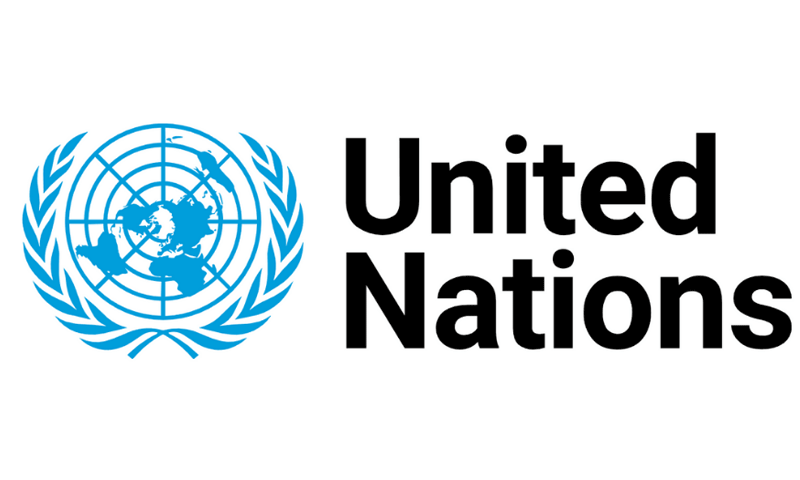Tariq Mahmood Awan
Population control is the practice of limiting the growth of the human population, especially in poor or densely populated regions, by using various methods such as contraception, sterilization, education, and incentives. Population control is essential for achieving sustainable development, as it can help reduce the pressure on natural resources, improve the quality of life, and prevent social and environmental problems. Population welfare is the provision of services and policies that aim to improve the reproductive health and well-being of people, especially women and children, and to empower them to make informed choices about their family size and spacing. Population welfare is closely linked to population control, as it can help to increase the demand and supply of family planning methods and to address the unmet needs of the people.
In this article, I will critically examine the following aspects of population control and welfare:
- Population policy formulation, implementation, monitoring, and evaluation
- Demographic statistics and analysis
- Mainstreaming population factor in the development planning process
- Provision of family welfare services including family planning and general medical care
- Preparation of budget and development schemes
- Coordination with the federal government, international agencies, NGOs, and donors
- Procurement and distribution of contraceptives
- Training, research and development of professional standards
- Information, education, and communication services
- Promotion of population planning activities through private and other public sector institutions
Population policy formulation, implementation, monitoring, and evaluation
Population policy is a set of goals, strategies, and actions that a government adopts to influence the size, structure, and distribution of its population. Various factors, such as demographic trends, socioeconomic conditions, political ideologies, religious beliefs, and international agreements, can influence population policy. Population policy can have various objectives, such as reducing population growth, improving reproductive health, enhancing human capital, promoting gender equality, and protecting the environment.
Population policy formulation is the process of identifying the population issues and challenges, setting the population goals and targets, designing the population strategies and interventions, and allocating the population resources and responsibilities. Population policy formulation should be based on sound demographic data and analysis, stakeholder consultation and participation, and evidence-based best practices. Population policy formulation should also be aligned with the national and provincial development plans and priorities, as well as the international commitments and obligations. The population policy formulation scheme should have comprehensive, delegated, and executive legislation.
Population policy implementation is the process of executing the population strategies and interventions, delivering the population services and products, and managing the population resources and personnel. Population policy implementation should be coordinated and integrated across different sectors, levels, and actors, such as health, education, social welfare, finance, environment, local government, civil society, private sector, and donors. Population policy implementation should also be responsive and adaptive to the changing population needs and demands, and the emerging population opportunities and challenges.
Population policy monitoring and evaluation is the process of tracking the population’s progress and performance, assessing the population’s outcomes and impacts, and learning from the population’s experiences and feedback. Population policy monitoring and evaluation should be systematic and continuous, using various indicators, methods, and tools, such as surveys, censuses, registers, records, reports, audits, reviews, and studies. Population policy monitoring and evaluation should also be participatory and transparent, involving various stakeholders, such as beneficiaries, providers, managers, policymakers, and researchers. Population policy monitoring and evaluation should also be used for accountability and improvement, providing evidence and information for population decision-making and learning.
Demographic statistics are the numerical data that describe the characteristics and dynamics of a population, such as size, growth, structure, distribution, fertility, mortality, migration, and urbanization. Demographic statistics are collected from various sources, such as censuses, surveys, registers, records, and projections. Demographic statistics are essential for population policy formulation, implementation, monitoring, and evaluation, as they provide the baseline, trends, and scenarios of the population’s situation and change.
Demographic analysis is the application of statistical methods and techniques to demographic data to measure, compare, and explain population phenomena and patterns. Demographic analysis can be descriptive or analytical, depending on the purpose and scope of the study. Demographic analysis can be used for various purposes, such as estimating the population size and growth, projecting the population’s future, analyzing the population determinants and consequences, and evaluating the population policies and programs.
Mainstreaming population factor in the development planning process
Mainstreaming population factors in the development planning process is the integration of population issues and perspectives into the development goals, strategies, and actions at all stages and levels of the development planning process. Mainstreaming the population factor in the development planning process is important for achieving sustainable development, as it can help to address the population challenges and opportunities and to enhance the population benefits and impacts of the development interventions.
Mainstreaming population factor in the development planning process can be done by using various approaches and mechanisms, such as:
- Conducting population situation analysis and population impact assessment, to identify the population problems and potentials, and to assess the population implications and effects of the development interventions.
- Setting population objectives and indicators, to define the population outcomes and outputs, and to measure the population progress and performance of the development interventions.
- Designing population strategies and actions, to select the population interventions and activities, and to allocate the population resources and responsibilities for the development interventions.
- Implementing population interventions and activities, to execute the population strategies and actions, and to deliver the population services and products for the development interventions.
- Monitoring and evaluating population interventions and activities, to track the population progress and performance, and to assess the population outcomes and impacts of the development interventions.
- Learning and improving population interventions and activities, to use the population evidence and information, and to incorporate the population feedback and lessons for the development interventions.
Family welfare services are the services that aim to improve the reproductive health and well-being of people, especially women and children, and to empower them to make informed choices about their family size and spacing. Family welfare services include family planning and general medical care, as well as other related services, such as maternal and child health, nutrition, immunization, education, counseling, and referral.
Family planning is the service that provides people with the information, education and means to prevent or delay pregnancy or to terminate unwanted pregnancies according to their reproductive rights and preferences. Family planning can help to reduce maternal and infant mortality and morbidity, to prevent the transmission of sexually transmitted infections and HIV/AIDS, to enhance the quality of life and gender equality, and contribute to population control and sustainable development.
General medical care is the service that provides people with the diagnosis, treatment, and prevention of common diseases and injuries, as well as the promotion of health and hygiene. General medical care can help to improve the physical and mental health and well-being of the people, reduce the burden of disease and disability, increase productivity and income, and support family planning and reproductive health.
A budget is a financial plan that estimates the income and expenditure of a government, organization, or project for a specific period of time, usually a year. A budget is essential for population control and welfare, as it reflects the priorities and commitments of the government, organization, or project and allocates the resources and responsibilities for population interventions and activities.
Development schemes are projects or programs that aim to achieve specific development objectives and outcomes within a specific time frame and budget. Development schemes are important for population control and welfare, as they design and implement population interventions and activities and deliver the population services and products to the target population groups and areas.
Preparation of budget and development schemes is the process of planning, designing, and approving the budget and development schemes for population control and welfare. Preparation of budget and development schemes should be based on the population policy goals and targets, the population situation analysis and impact assessment, the population strategies and interventions, and the population monitoring and evaluation. Preparation of budget and development schemes should also be coordinated and integrated with the national and provincial development plans and budgets, as well as international agreements and obligations. Accordingly, the provincial governments should maximize the budget in order to control and manage population growth.
Coordination is the process of harmonizing and aligning the policies, strategies, actions, and resources of different actors, sectors, levels, and phases to achieve common goals and outcomes. Coordination is vital for population control and welfare, as it can help to enhance the coherence, efficiency, effectiveness, and sustainability of population interventions and activities. The coordination must involve the federal, local, and private organizations with Religious institutes to make sure that the theme and program of the population welfare departments are developing consensus among the vast sections of the population. After the 18th Amendment, the subject of the population rests with the provinces. Therefore, the capacity of the provincial population welfare departments must be enhanced in order to implement the policy and programs. Human resources, executive engagement, and implementation at the grassroots level with district administration and local government is the way forward for implementing the policies.
Furthermore, international agencies are intergovernmental or non-governmental organizations that operate at the global or regional level and that provide technical, financial, and humanitarian assistance as advocacy and coordination for population control and welfare.
NGOs are non-governmental organizations that operate at the local, national, or international level and that provide service delivery, capacity building, research, innovation, and participation and empowerment for population control and welfare.
Donors are the countries or organizations that provide financial or in-kind support and partnership and cooperation for population control and welfare. Therefore, coordination with the federal government, international agencies, NGOs, and donors is the process of establishing and maintaining communication, consultation, and collaboration among the different actors, sectors, levels, and phases for population control and welfare. Coordination with the federal government, international agencies, NGOs, and donors should be based on the principles of mutual respect, trust, and accountability and the mechanisms of dialogue, agreement, and review.
Lastly, the religious, social, cultural, and societal acceptance of population control is critical. However, the primary question is, who will do it? It is the primary obligation of the provincial population welfare departments after the promulgation of the 18th Amendment. Furthermore, the provincial governments, political leaders, and parties should prioritize population welfare control. How can Pakistan develop with a birth rate of more than 2 percent? Population welfare and control are the foundations of developing Pakistan’s state and society.
Please, subscribe to the YouTube channel of republicpolicy.com

















































